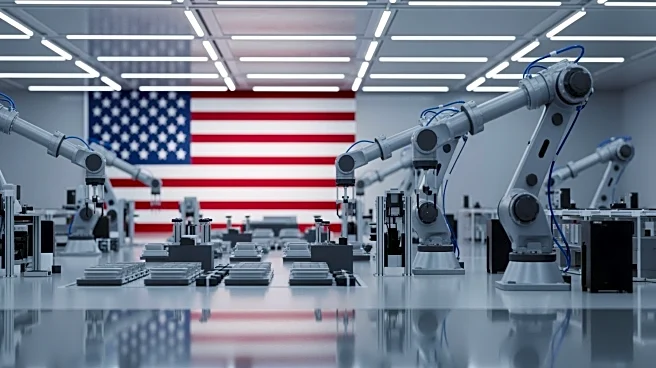What's Happening?
In 2025, U.S. manufacturers are facing significant challenges due to tariffs and slow reshoring efforts. Companies like Glenro, a family-owned manufacturing firm in Kentucky, are experiencing increased costs due to tariffs on raw materials and trade barriers.
Despite these challenges, Glenro has managed to increase international sales by 30% through flexibility and creativity. A survey by Wipfli indicates that small-to-medium-sized manufacturers are reporting negative impacts from tariff and trade policies, with revenue declines between 10% and 40%.
Why It's Important?
The ongoing tariff situation and slow reshoring efforts have significant implications for the U.S. manufacturing sector. Tariffs increase production costs, making it difficult for manufacturers to compete globally. The lack of reshoring progress means that jobs and production capabilities remain overseas, affecting domestic employment and economic growth. The situation highlights the need for stable trade policies and incentives to encourage reshoring, which could strengthen the U.S. manufacturing base and reduce dependency on foreign production.
What's Next?
Manufacturers are likely to continue adapting by finding innovative solutions to mitigate the impact of tariffs. This may include diversifying supply chains, investing in lean manufacturing practices, and seeking government support for reshoring initiatives. The industry will be closely watching for any changes in trade policies that could provide relief or further challenges. Stakeholders, including policymakers and industry leaders, may need to collaborate to create a more favorable environment for U.S. manufacturing.
Beyond the Headlines
The current trade environment raises questions about the long-term sustainability of U.S. manufacturing. Ethical considerations around labor practices and environmental impact may also come into play as companies navigate these challenges. The situation could lead to a reevaluation of global supply chains and a push for more localized production to enhance resilience against future disruptions.















